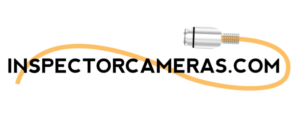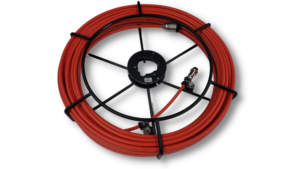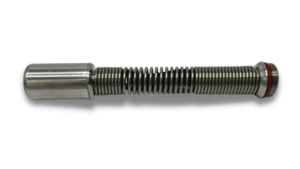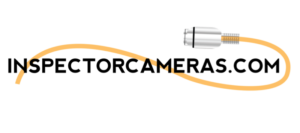With prices ranging from a few hundred to thousands of dollars, and add-on options of various cable lengths and camera heads, it can be difficult to know which sewer inspection camera is the best for YOUR business. Before you dive into your research, it is beneficial to understand all the options allowing you to make the best decision.
Cables
Push cables are an essential part of a sewer camera as it allows you to push the camera head down the pipe to conduct the inspection. The diameter (thickness) of the cable and the length are two variables that need consideration when purchasing your sewer inspection camera.
Length
First, determine the farthest length you need to travel down a pipe. If you are conducting residential inspections, you will need a cable that reaches the cleanouts, usually located no further than 100 feet. Of course, there are always exceptions and if you find yourself needing a longer cable, look for extension reels saving you money on buying a whole new system.
Thickness
The thickness of the cable complements the length as they work together to provide strength and flexibility to go further and to navigate through bends and 90-degree angles. The more flex a cable has, the shorter length you can push. The stiffer the cable, the longer you can push. However, it is important to keep in mind that with each elbow comes a reduction in the push length potential of the cable.
Every cable does have a compromise which is why home inspectors should always use the heaviest cable for the known conditions of the pipe. It is our belief from experience in the field, that the 6.8mm red cable is a great balance between stiffness and flexibility and will be appropriate for most of the work you encounter.
Extension Reels
If you discover on a few of the inspections that the 115’ cable is not long enough, consider investing in a 200’ extension reel. Inspector Cameras extension reel is a 6.8mm cable made from a different and thicker material allowing it to be pushed the full length and can attach to the original control box while using the original camera head with an adapter.
Ensuring that you use the correct camera head will give you better results and will increase the efficiency of the inspection. For home inspectors conducting sewer camera inspections, a 23mm camera head will cover a wide range of inspections. Most residential pipes span from two inches and up, and the 23mm camera with a protective skid will fit in these pipes the best. We strongly encourage the use of a protective skid with each inspection.
512Hz Sonde:
These camera heads have a 512Hz sonde built in that allows you to locate the approximate area of the defect. By using a locating tool, you can detect the radio transmission coming from the camera head and pinpoint the location. If you plan on using a sonde in the camera head, equip yourself with a sonde locator.
Self-Leveling:
We always recommend a self-leveling camera head. A self-leveling camera head uses a precision roller bearing and counterweight by using gravity to orient the lens and picture the “right side up”. This feature allows you to have a clear view of the pipes you inspect and is especially helpful for your customers who most likely will not know what they are looking at when reviewing the report.
With all this information in mind, you are ready to purchase a sewer inspection camera that will bring more value and revenue to your business. At Inspector Cameras, we believe that you don’t have to break the bank to get a quality sewer inspection camera.
Have questions? Give us a call, and our knowledgeable customer support staff will be happy to help you decide which sewer inspection camera is the best for you!




